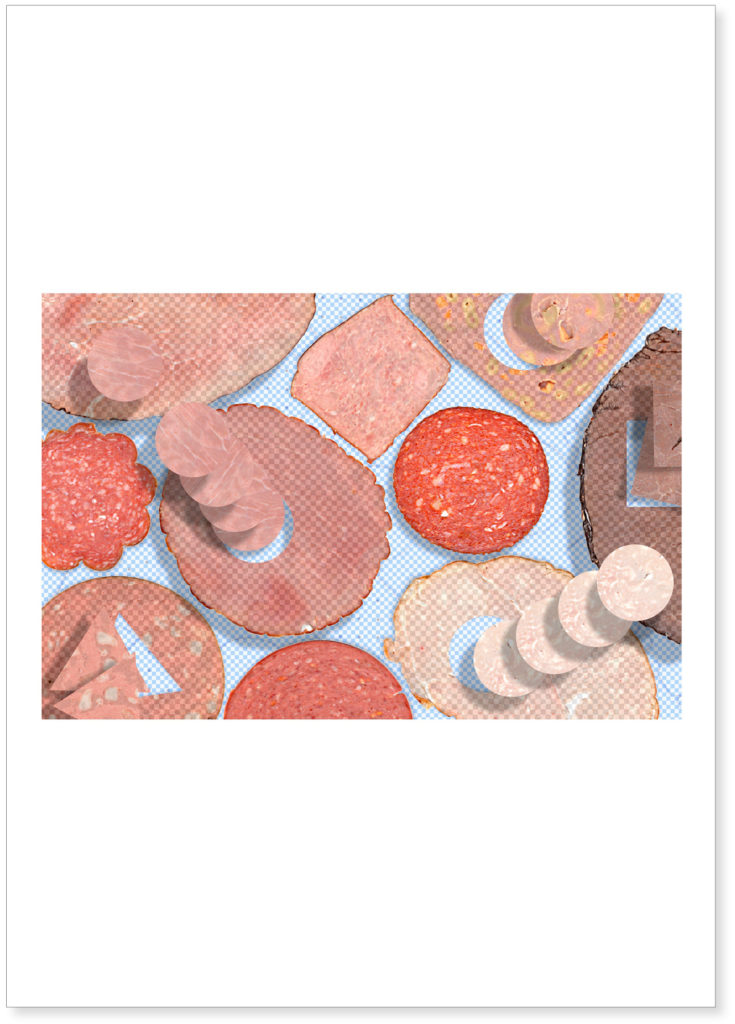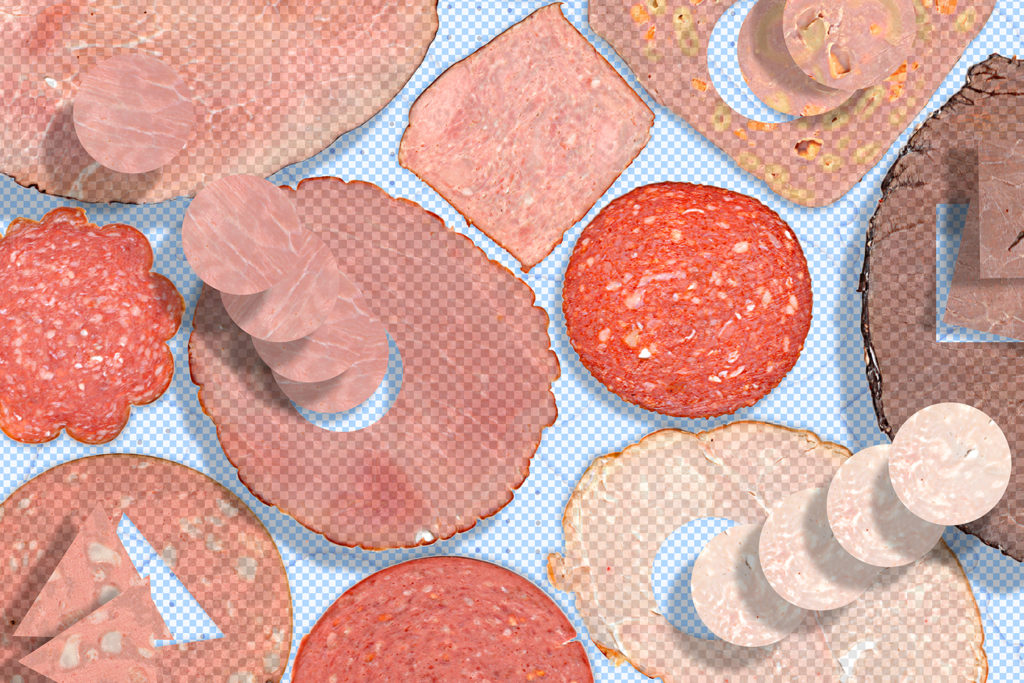
bricoLUNCHABLE
Lindsey Krug
Lunchables—the iconic American lunchtime treat—were once a sort of cafeteria status symbol. Showing up with a brown paper bag only to uncover the bright yellow box inside was the ultimate lunchtime trick. With compartments full of raw materials ready to be arranged before consumption, the process of assembling crackers and cheeses and meats and cookies […]
Lunchables—the iconic American lunchtime treat—were once a sort of cafeteria status symbol. Showing up with a brown paper bag only to uncover the bright yellow box inside was the ultimate lunchtime trick. With compartments full of raw materials ready to be arranged before consumption, the process of assembling crackers and cheeses and meats and cookies served as a cafeteria Rorshach, revealing the creative intuitions of the consumer. For BROWN BAGS, the history, materiality, and construction techniques of the Lunchable are revisited through the lens of bricolage and Jack Halberstam’s “low theory,” coined in the 2011 book The Queer Art of Failure. Six lunch kits are assembled, each containing a unique variety of meats, cheeses, crackers, and accoutrements. Diners are encouraged to trade and barter, nibble and re-shape, and ultimately assemble an ephemeral charcuterie sculpture to eat for lunch.
Equipment:
Cutting board
Cookie cutters OR, sharp knife with miscellaneous shape stencils (4-6 shapes total)
6x – Re-usable compartmentalized lunch boxes (minimum 4 compartments)
*Ingredients:
Crackers (3-4 varieties)
For example, Ritz crackers, Triscuits, saltines, water crackers, etc.
Sliced lunchmeat (3-4 varieties)
For example, turkey, ham, salami, mortadella, etc.
Sliced cheese (3-4 varieties)
For example, cheddar, pepper jack, swiss, muenster, etc.
Accoutrements, Tools & Cleavages (6-8 varieties)
For example, individual mayo/mustard/hot sauce packets; pretzel sticks; sliced pickles/bite-sized pickled vegetables; carrot sticks; grapes; sliced apples; Oreos/sandwich cookies; leftover cleavages from the meats and cheeses (see step 2 for clarification)
*NB: From the outset, this recipe is intended to be a collaboration between the recipe author, the chef and preparation team, the Lunchable consumer, and fellow lunchmates. The recipe author makes ingredient suggestions, the chef and preparation team make ingredient selections based on local availability, the Lunchable consumer makes decisions about how to combine ingredients and is encouraged to make trades and swaps with their fellow lunchmates.
Instructions:
1. Gather all ingredients and open all packages. Take meats and cheeses out and separate the slices on a cutting board so they can be cut.
2. Using an assortment of cookie cutters or a sharp knife and stencil, cut each variety of meat and cheese into a shape (for example, swiss can be a square, ham a triangle, salami a circle, mortadella a star, and so on). Some meats and cheeses can have the same shape. Aim for about 4-6 unique shapes total. Do NOT discard the squiggly bits and scraps created between the cookie-cutter cutouts. Those are the cleavages and they will be consumed too.
3. As needed, pat dry, trim down, and prepare the accoutrement ingredients so they fit well into the lunch container.
4. Assemble the six lunchables – one for each lunchtime guest.
a. In the first compartment of the lunchbox, place a variety of crackers. Ideally somewhere around 8 crackers, or as many as will fit.
b. In the second compartment, place a variety of cut meats. You may decide to give each diner all of one variety of meat, or you may decide to give each diner a couple of varieties.
c. In the third compartment, place a variety of cut cheeses. You may decide to give each diner all of one variety of cheese, or you may decide to give each diner a couple of varieties.
d. In the fourth compartment, place a variety of accoutrements, tools, and leftover cleavages. Every diner should receive at least one condiment packet, something salty (like a pickle), and something sweet (like a sandwich cookie). Every diner should receive a few leftover scraps of meat or cheese. Every diner should also get a couple of construction tools, like pretzel sticks, grapes, or carrot sticks.
e. Ingredients can be differently distributed into the 4 compartments however they fit best.
5. Seal the lunchboxes and place them inside individual brown bags.
6. Barter, build, and enjoy!

Lindsey Krug, “bricoLUNCHABLE”, image presented at “Brown Bags” exhibition and event at Architecture 2 Gallery in Winnipeg, Canada, on March 18, 2024.